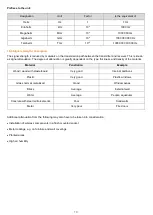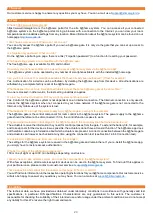
23
Cross-section of house with centrally positioned b@home gate
The angle at which the radio waves penetrate an obstacle also affects the range of transmission. In the best-case scenario,
the transmitter and receiver should be positioned such that the transmission path does not pass through walls or ceilings
at an angle.
Note: An inclined entrance angle means that more material has to be passed through!
In addition to the number of walls and ceilings passed through, material thickness and metallic objects, there are other
sources of interference for wireless transmission. Keep as far away as possible from potential sources of interference to
avoid negative impact.
Potential sources of interference include:
•
Desktop PCs
•
Microwave devices
•
TVs
•
DECT and/or cordless phones
•
WLAN routers
•
Devices with an LTE data connection
•
Wireless headsets
•
Baby monitors
•
Amateur radio equipment
A distance of ≥ 50 cm should be maintained from these components.
Transmitter 2
Transmitter 3
Transmitter 1
Transmitter 4
Receiver
Timer sensor or
b@home gate
Ceiling
Ceiling
Receiver
Receiver
Shorter permeation
Longer permeation
Transmitter
Transmitter




























